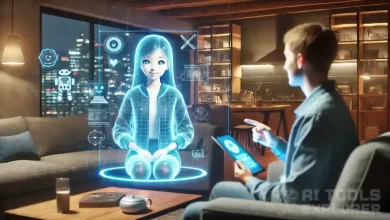Hazard Perception Mock Test: What You Need to Know

The hazard perception mock test is an essential tool for learners preparing for the driving theory test. It replicates the real hazard perception test, allowing candidates to practice spotting potential dangers on the road. This section of the theory test assesses your ability to recognize and respond to hazards, a critical skill for safe driving. Understanding how the test works, what to expect, and how to prepare can make the difference between passing and failing. Here’s everything you need to know about the hazard perception mock test.
What is a Hazard Perception Test?
The hazard perception test is part of the UK driving theory test. It requires candidates to watch a series of video clips depicting real-life road situations and identify potential hazards that could require the driver to slow down, stop, or change direction. The test evaluates your awareness of potential dangers and your ability to react quickly and appropriately to avoid accidents.
In the test, each video clip contains at least one developing hazard, and candidates must click the mouse as soon as they notice a potential danger. The sooner you click after noticing the hazard, the more points you earn, with a maximum score of five points per hazard. However, clicking too early or too late can result in a lower score, and random or repeated clicking can lead to disqualification from scoring points on that particular clip.
How Does a Hazard Perception Mock Test Work?
A hazard perception mock test functions similarly to the real one, featuring video clips that simulate everyday driving scenarios. By taking a mock test, learners can familiarize themselves with the format and practice spotting hazards. This practice is vital, as it allows candidates to improve their observation skills and reaction times. The mock test includes scoring and feedback, helping candidates identify areas where they may need more practice.
One of the most significant benefits of taking a hazard perception mock test is that it gives learners an idea of what to expect in the actual exam. Since the mock test mirrors the real test in both content and scoring, it helps reduce test-day anxiety. Candidates will know how to pace themselves, what types of hazards to look out for, and how to react in a way that maximizes their score.
Common Hazards to Watch Out For
There are many types of hazards that candidates should be aware of during a hazard perception test. Some of the most common ones include:
- Pedestrians: People crossing the road unexpectedly or stepping out from between parked cars.
- Cyclists: Bicycles pulling out from the side of the road or riding close to the lane.
- Other Vehicles: Cars, lorries, or buses changing lanes, slowing down, or turning unexpectedly.
- Road Conditions: Obstructions like potholes, roadworks, or slippery surfaces that could affect vehicle control.
- Animals: Pets, farm animals, or wildlife crossing the road.
By recognizing these hazards early, candidates can avoid accidents and earn higher scores during the test.
Tips for Passing the Hazard Perception Test
- Stay Focused: It’s important to pay close attention throughout each clip. Many learners fail because they become distracted or zone out during the test. Keeping your eyes on the road at all times, just as you would while driving, will help you spot hazards more quickly.
- Click Once You Spot a Hazard: You should click as soon as you identify a developing hazard. Be cautious about over-clicking, as the system can penalize you for clicking too often or too randomly. A controlled, measured approach to clicking is best.
- Practice with Mock Tests: The more you practice, the better you’ll become at spotting hazards. Mock tests are an excellent resource for sharpening your skills. They allow you to experience the test format in advance and give you valuable feedback on your performance. With regular practice, you’ll improve your reaction times and increase your chances of passing.
- Learn the Types of Hazards: Familiarize yourself with the different types of hazards that might appear in the test. Knowing what to expect, from pedestrians to other vehicles, will prepare you to spot them faster during the actual test.
- Stay Calm: Finally, it’s important to remain calm and composed during the test. Panic or overthinking can lead to missed hazards or too many clicks, lowering your score. Keep your nerves in check, trust your instincts, and focus on the road ahead.
Why Mock Tests are Important
Taking a hazard perception mock test can significantly improve your chances of passing the real test. Mock tests provide a realistic simulation of the exam, allowing candidates to practice under the same conditions they will face on the actual test day. By doing so, learners can become more familiar with the format and develop the observation and reaction skills necessary for success.
In addition, mock tests give candidates valuable feedback on their performance. By reviewing their scores and understanding where they went wrong, learners can focus their study efforts on areas that need improvement. Ultimately, regular practice with mock tests builds confidence, reduces test-day anxiety, and ensures that candidates are fully prepared when they sit the real hazard perception test.
Conclusion
The hazard perception mock test is an invaluable tool for any learner preparing for their driving theory test. By practicing with mock tests, candidates can improve their hazard recognition and reaction times, gain familiarity with the test format, and reduce anxiety before the actual exam. Regular practice, coupled with focused attention and calmness under pressure, is the key to passing the hazard perception test and becoming a safe, responsible driver.





